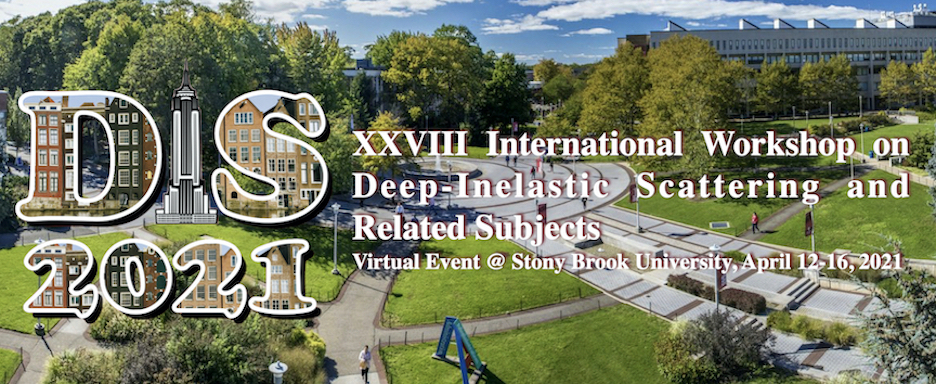Speaker
Description
Investigations of coherent production background and eA collision geometry using forward particles at the EIC
Wan Chang
Institute of Particle Physics, Central China Normal University, Wuhan 430079, China
and Department of Physics, Brookhaven National Laboratory, Upton, NY 11973, USA
changwan@mails.ccnu.edu.cn
The Electron-Ion Collider (EIC) is a next generation accelerator which will provide answers to burning questions in the field of nuclear physics. The EIC is a very versatile collider with a wide range of beam energies, polarizations, and species, as well as high luminosity, all required to precisely image quarks and gluons in spatial and momentum space and their interactions, to explore the new QCD frontier of strong color fields in nuclei – to understand how matter at its most fundamental level is made. One of the golden measurements at the EIC is coherent $J/\psi$ vector meson production in electron-nucleus (eA) scattering in order to obtain the spatial gluon density distribution in heavy nuclei. However, the background contamination from the incoherent process could be overwhelming; therefore, the background suppression in the experiment will be key for a successful measurement. We investigate the rejection of incoherent $J/\psi$ production by vetoing the nuclear breakup – through the decay protons, neutrons, and photons. A realistic estimate of the rejection power has been made based on the conceptual design of the interaction region and its detector acceptances and performances. Based on the same detector configurations, we also revisit the concept of defining the collision geometry in eA using forward produced neutrons. The study is based on the BeAGLE event generator, which is a hybrid model combining Pythia 6, DPMJet, and Fluka for simulating deep-inelastic scattering in electron-ion collisions. In addition studies comparing BeAGLE to existing ZEUS and E665 experimental data are also presented.

